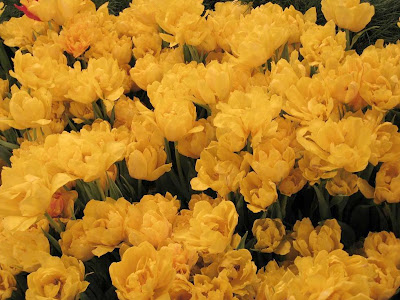By education I am actually a biodynamic farmer, which is a branch of organic farming. If you don't have a clear idea of biodynamics, well neither had I before I studied it. I found the studies while following the lead of very special ecovillage type of moments. It was the people dancing folk dances on our summer country house's big hall and then the smell of a wooden house at Labby organic farm that got me into Snellman-korkeakoulu and the biodynamic studies.
The concept of biodynamics didn't really win me over immediately. Biodynamic farming is basically using organic farming methods, but then there's the specific dogmas to follow. You know, that cow manure stuffed into a horn, dug into the earth and processed into the Preparate 500. When discussing biodynamic farming these preparates tend to steal the show, for the only explanation is that they are done following R. Steiner's rules from his Agricultural Course. The book is incomprehensible, I have to say, and it made no sense to me even the second time. What bothered me with these rules and guidelines is not really the thing our culture has in general; not believing before seeing. The problem with biodynamic farming was for me the idea that there would only be one way to do any given thing, like fertilizing a land.
But the biodynamic farming did win me over. Over time. I think I got it all together on our last school day. It was spring and we painted together with two other students, the three of us making together a huge work. The months of observing the creative processes through our art studies, reading that incomprehensible book, discussions, blended on that big piece of paper. The ways of knowing that are subtle, intuitive, subjective. The bees, the cows, the compost and fields and somewhere the farmer, taking care of the earth. The different subtle realms and layers of a farm.
In biodynamic agriculture the intention is to create a farm that is a living organism. It is not only the one field of vegetables that needs to be organically farmed, but the whole farm. The farming system needs to recycle the nutrients. That's why the biodynamic certificates are for the whole farm, not to a field of crop.
The farming guidelines for biodynamic produce are basically stricter than organic farming guidelines. In the States 10 % of the agricultural land on a Demeter farm has to be let to its natural state, for biodiversity. In Finland the guidelines for organic and biodynamic are different e.g. in that in biodynamics the growing medium is never glass wool as it can be in organic greenhouse production.
Main point being the same as in C. Mattinson's great article: the food tastes better. Phenomenally.
An interesting article and discussion about the future of agriculture here.









